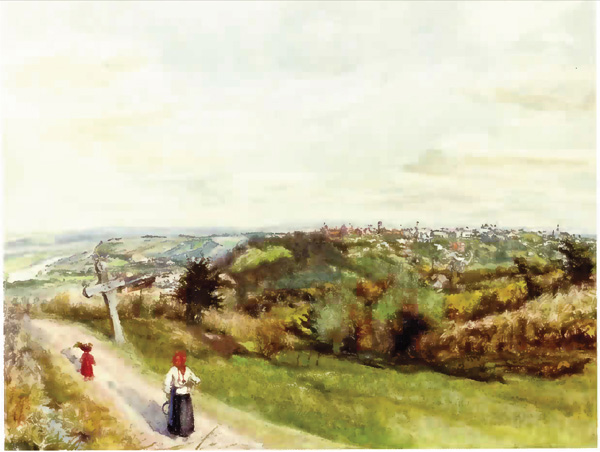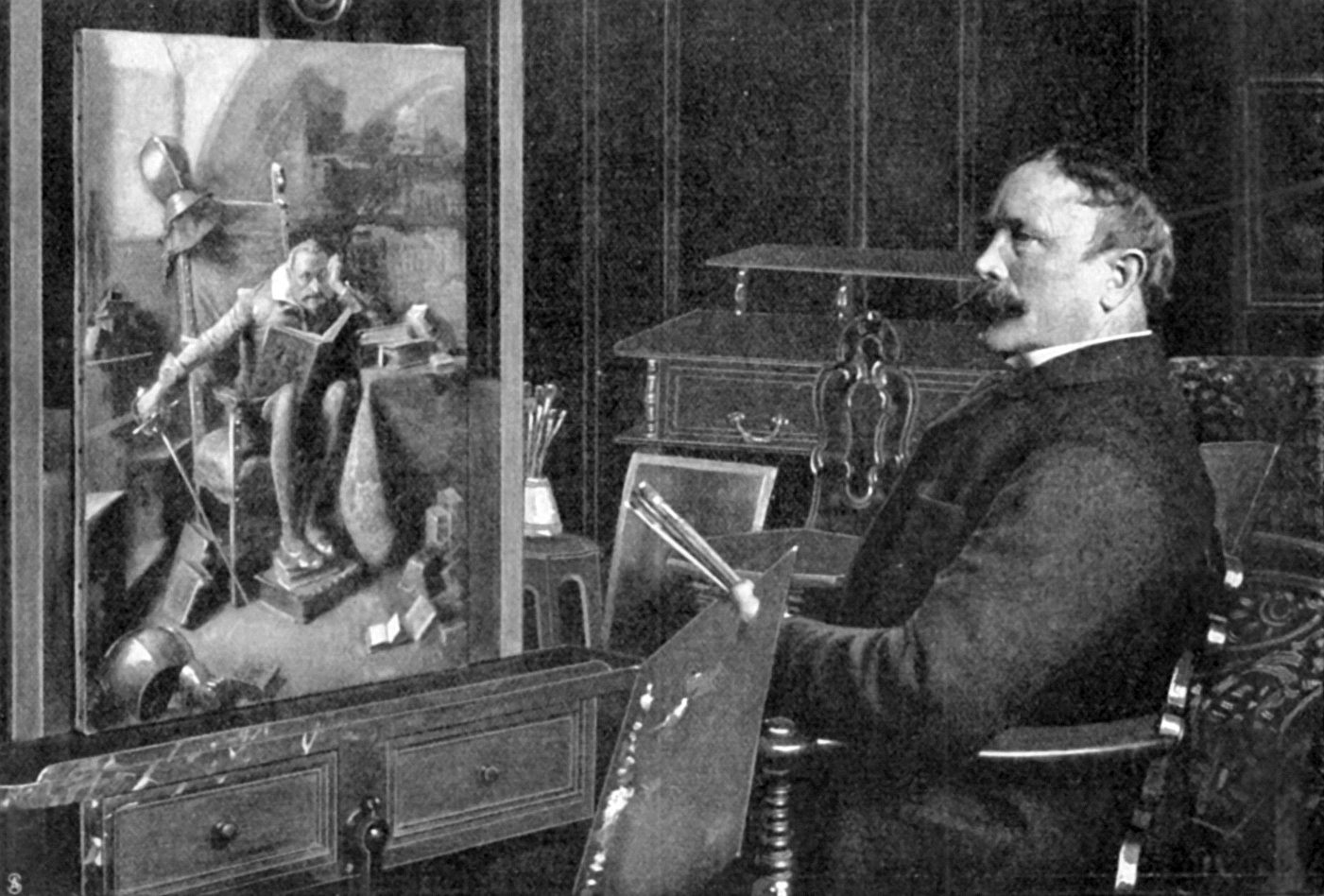|
Chernivtsi Regional Art Museum
Chernivtsi Regional Art Museum ( Ukrainian: Чернівецький обласний художній музей) is an art museum located in Chernivtsi, Ukraine. The museum was founded in 1988 and maintains a collection of over 12 thousands exhibits, with a particular focus on the art of the historic region of Bukovyna. The museum is located in a former bank building, an Art Nouveau architectural monument of national significance. History The Chernivtsi Art Museum was created in 1988 from the art department of the Chernivtsi Museum of Local Lore. The collection, dating from the decades following Museum's foundation in 1863, formed the basis of the collection of the newly created institution. The new art museum opened in 1988 in then inactive Holy Spirit Cathedral. In 1990, after the reopening of the Holy Spirit Cathedral, the exhibits of the Art Museum were stored in the building of the former hotel of the Communist Party Regional Committee. In 1991, the museum was moved i ... [...More Info...] [...Related Items...] OR: [Wikipedia] [Google] [Baidu] |
Chernivtsi
Chernivtsi ( uk, Чернівці́}, ; ro, Cernăuți, ; see also #Names, other names) is a city in the historical region of Bukovina, which is now divided along the Romania–Ukraine border, borders of Romania and Ukraine, including this city, which is situated on the upper course of the Prut, Prut river in the Western Ukraine, Southwestern Ukrainian territory. Chernivtsi serves as the administrative center for the Chernivtsi Raion, Chernivtsi Oblast, Chernivtsi raion, the Chernivtsi urban hromada, and the Chernivtsi Oblast, oblast itself. In 2021, the Chernivtsi population, by estimate, is and the latest Ukrainian Census (2001), census in 2001 was 240,600. The first document that refers to this city dates back to 1408, when Chernivtsi was a town in the region of Moldavia, formerly as a defensive fortification, and became the center of Bukovina in 1488. In 1538, Chernivtsi was under the control of the Ottoman Empire, and the Turkish control lasted for two centuries until ... [...More Info...] [...Related Items...] OR: [Wikipedia] [Google] [Baidu] |
Franz Joseph I Of Austria
Franz Joseph I or Francis Joseph I (german: Franz Joseph Karl, hu, Ferenc József Károly, 18 August 1830 – 21 November 1916) was Emperor of Austria, King of Hungary, and the other states of the Habsburg monarchy from 2 December 1848 until his death on 21 November 1916. In the early part of his reign, his realms and territories were referred to as the Austrian Empire, but were reconstituted as the dual monarchy of the Austro-Hungarian Empire in 1867. From 1 May 1850 to 24 August 1866, Franz Joseph was also President of the German Confederation. In December 1848, Franz Joseph's uncle Emperor Ferdinand abdicated the throne at Olomouc, as part of Minister President Felix zu Schwarzenberg's plan to end the Revolutions of 1848 in Hungary. Franz Joseph then acceded to the throne. Largely considered to be a reactionary, he spent his early reign resisting constitutionalism in his domains. The Austrian Empire was forced to cede its influence over Tuscany and most of its claim to ... [...More Info...] [...Related Items...] OR: [Wikipedia] [Google] [Baidu] |
Art Museums And Galleries In Ukraine
Art is a diverse range of human activity, and resulting product, that involves creative or imaginative talent expressive of technical proficiency, beauty, emotional power, or conceptual ideas. There is no generally agreed definition of what constitutes art, and its interpretation has varied greatly throughout history and across cultures. In the Western tradition, the three classical branches of visual art are painting, sculpture, and architecture. Theatre, dance, and other performing arts, as well as literature, music, film and other media such as interactive media, are included in a broader definition of the arts. Until the 17th century, ''art'' referred to any skill or mastery and was not differentiated from crafts or sciences. In modern usage after the 17th century, where aesthetic considerations are paramount, the fine arts are separated and distinguished from acquired skills in general, such as the decorative or applied arts. The nature of art and related concepts, ... [...More Info...] [...Related Items...] OR: [Wikipedia] [Google] [Baidu] |
Museums In Chernivtsi Oblast
A museum ( ; plural museums or, rarely, musea) is a building or institution that cares for and displays a collection of artifacts and other objects of artistic, cultural, historical, or scientific importance. Many public museums make these items available for public viewing through exhibits that may be permanent or temporary. The largest museums are located in major cities throughout the world, while thousands of local museums exist in smaller cities, towns, and rural areas. Museums have varying aims, ranging from the conservation and documentation of their collection, serving researchers and specialists, to catering to the general public. The goal of serving researchers is not only scientific, but intended to serve the general public. There are many types of museums, including art museums, natural history museums, science museums, war museums, and children's museums. According to the International Council of Museums (ICOM), there are more than 55,000 museums in 202 coun ... [...More Info...] [...Related Items...] OR: [Wikipedia] [Google] [Baidu] |
Museums In Ukraine
This is a list of museums in Ukraine. It contains details of museums within Crimea, which was annexed by Russia in 2014, and is now administered as part of the Russian Federation. Many of these museums are at risk in 2022 due to the Russian invasion of Ukraine. Cherkasy Oblast * Taras Hill Crimea *Aivazovsky National Art Gallery *Feodosia Money Museum * Livadia Palace *Museum of Vera Mukhina *Naval museum complex Balaklava * Simferopol Art Museum * Vorontsov Palace (Alupka) *White Dacha Chernihiv * Chernihiv Regional Art Museum * Chernihiv Museum of Military History *Chernigiv State Literary-Memorial Museum of Mykhailo Kotsiubynskyi Ivano-Frankivsk Oblast * Art Museum (Ivano-Frankivsk) * Pysanka Museum * Ratusha, Ivano-Frankivsk Kharkiv Oblast *M. F. Sumtsov Kharkiv Historical Museum Kyiv Kyiv Oblast * Cossack Village (Stetsivka) *Mezhyhirya Residence Kirovohrad Oblast *Khutir Nadia *Strategic missile forces museum in Ukraine Lviv Oblast * Brody Museum of History and Di ... [...More Info...] [...Related Items...] OR: [Wikipedia] [Google] [Baidu] |
Augusta Kochanowska
Augusta Kochanowska (6 July 1868 – 7 December 1927) was a Polish artist, known for painting and illustrations. About Augusta Kochanowska was born on 6 July 1868 in Sadhora (Chernivtsi), Duchy of Bukovina, now Ukraine. From 1894 until 1899, she studied at the University of Applied Arts Vienna (also known as Kunstgewerbeschule des KK Osterr). She lived in Chernivtsi from the period 1885 until 1920, with some breaks. Her work was influenced by Ukrainian writer Olha Kobylianska Olha Yulianivna Kobylianska ( uk, Ольга Юліанівна Кобилянська; 27 November 1863 Gura Humorului, Bukovina, Austro-Hungary - 21 March 1942 Cernăuți, Cernăuți County, Romania) was a Ukrainian modernist writer and ..., who she met in 1874. Kochanowska made numerous illustrations for her books. In 2013, the Chernivtsi Art Museum published a catalog of the artist's life and work. References External links Augusta Kochanowskaon ArtNet.com 1868 births 1927 ... [...More Info...] [...Related Items...] OR: [Wikipedia] [Google] [Baidu] |
Epaminonda Bucevschi
Epaminonda Bucevschi (March 3, 1843February 13, 1891) was an ethnic Romanian painter from the Duchy of Bukovina in Austria-Hungary. Born in Iacobeni, north of Vatra Dornei, he studied at the theological seminary in Cernăuți from 1863 to 1867; this included a drawing component. He went on to the Academy of Fine Arts Vienna from 1868 to 1874; in 1872–1873, he was taught by Anselm Feuerbach and Joseph von Führich. He won first prize as the best student in 1872, and joined the Albrecht Dürer Society in 1873. He took study trips to Germany, France and Italy. He became a fashionable artist in Vienna, leading him to open a studio where he worked on icons, compositions, rococo pieces, majolica and portraits. He was friends with Viennese students Mihai Eminescu, Ciprian Porumbescu and Teodor V. Ștefanelli, who visited him often. Porumbescu found in him a source of material and moral support in his moments of struggle.Satco and Niculică, p. 298 Upon the request of Silvestru Morar ... [...More Info...] [...Related Items...] OR: [Wikipedia] [Google] [Baidu] |
Eduard Von Grützner
Eduard Theodor Ritter von Grützner (May 26, 1846 – April 2, 1925) was a German painter and professor of art. He was especially noted for his genre paintings of monks. He also repeatedly portrayed Falstaff. Childhood Grützner was born in 1846 into a noble family in Groß-Karlowitz near Neisse, Upper Silesia, Prussia (now Poland). His father was a prominent member of the church, and the local pastor often visited his parents' home. He recognized Eduard's talent and inclination for painting early on. The administrator of a ducal country house in the neighborhood got him paper, and eventually the pastor gained him entrance to the ''Gymnasium'' (a university preparatory school) of Neisse. Studies In 1864, the pastor brought Grützner to the private school of Hermann Dyck in Munich for art education, though his tenure at the Kunstgewerbeschule under Dyck was of short duration. In the first semester he transferred to the Classical Art class of Johann Georg Hiltensperger ... [...More Info...] [...Related Items...] OR: [Wikipedia] [Google] [Baidu] |
Mykola Ivasyuk
Mykola Ivanovych Ivasyuk (Ukrainian: Мико́ла Іва́нович Івасю́к: 28 July 1865, Zastavna — 25 November 1937, Kyiv) was a Ukrainian painter executed during the Great Purge. He specialized in history painting, but is also known for his postage stamp designs. Biography His father was a carpenter. At the time of his birth, Zastavna was part of Austria-Hungary, so his primary education was conducted in German and Romanian. For his secondary studies, he went to Chernivtsi. One of his instructors there was the Ukrainian artist Yustyn Pigulyak, who discovered and encouraged his talent for art by giving him free lessons. Before long, he had decided to become a history painter. In 1884, he was able to gain admission to the Academy of Fine Arts, Vienna. While there, he participated in student excursions to the Ternopil region, where he became acquainted with the nobleman, and painted portraits of his family. After graduating, he was recommended to the Academy of ... [...More Info...] [...Related Items...] OR: [Wikipedia] [Google] [Baidu] |
Pylon (architecture)
A pylon is a monumental gate of an Egyptian temple (Egyptian: ''bxn.t'' in the Manuel de Codage transliterationErmann & Grapow, ''Wörterbuch der ägyptischen Sprache'', vol.1, 471.9–11). The word comes from the Greek term 'gate'. It consists of two pyramid A pyramid (from el, πυραμίς ') is a structure whose outer surfaces are triangular and converge to a single step at the top, making the shape roughly a pyramid in the geometric sense. The base of a pyramid can be trilateral, quadrila ...al towers, each tapered and surmounted by a cornice, joined by a less elevated section enclosing the entrance between them.Toby Wilkinson, ''The Thames and Hudson Dictionary of Ancient Egypt'', Thames & Hudson, 2005. p.195 The gate was generally about half the height of the towers. Contemporary paintings of pylons show them with long poles flying banners. Egyptian architecture In ancient Egyptian religion, the pylon mirrored the Egyptian hieroglyphs, hieroglyph akhet (hiero ... [...More Info...] [...Related Items...] OR: [Wikipedia] [Google] [Baidu] |





